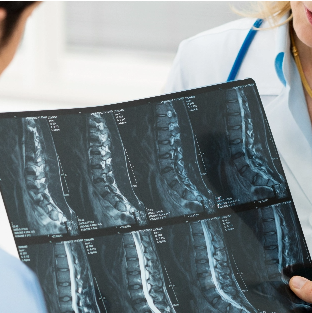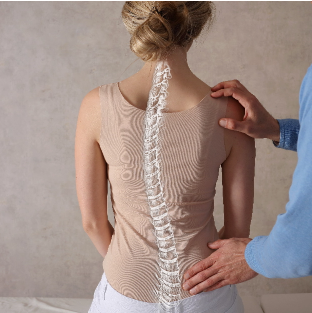From endoscopic techniques to multilevel disc replacement and awake spinal fusion, nine surgeons discuss what procedures they are migrating to the ASC this year:
Question: What procedure(s) are you considering migrating to your surgery center?
Alok Sharan, MD. NJ Spine and Wellness (East Brunswick, N.J.): As we become more comfortable with our awake spinal fusion protocol, we will be looking to migrate one-level lumbar fusions (i.e. minimally invasive transforaminal lumbar interbody fusion) to the surgery center. Performing the surgery under regional anesthesia will reduce a lot of the risks of the procedure and result in a faster recovery. This will allow us to perform the procedure in an ASC and feel comfortable discharging them home within a few hours.
Brian Gantwerker, MD. Craniospinal Center of Los Angeles: We are looking forward to the purchase of an endoscopic surgery system for the ASC setting. It would be wonderful to recruit patients from other places to a center of endoscopic spine excellence. As more patients realize its benefits and legitimacy as a procedure, the more patients will be looking for someone to perform it. Also, I think multilevel cervical arthroplasty can be performed in the ASC setting, provided there is a 24-48 hour hold ability. With the excellence of nursing care at the ASC, I would feel very comfortable doing a two-level arthroplasty in the ASC setting.
Jeremy Smith, MD. Hoag Orthopedic Institute (Irvine, Calif.): As outpatient surgery center cases become more commonplace, we will see more complex spinal reconstructions performed in this setting. Safety measures and protocol, coupled with the latest in MIS technology, make this possible. Currently, I perform all of my ACDFs, cervical total disc replaceemnts and simple posterior lumbar decompressions in an outpatient center. Lateral technology has been optimized and can now be performed in a single position, either prone or lateral. This approach limits both surgical time and soft tissue trauma, making this an optimal option. Additionally, the use of navigation and robotic technology maximizes accuracy while allowing for minimal incision size. Safety is paramount and in order to grow outpatient spine surgery, this needs to be at the forefront of thought and further clinical studies are needed to reinforce its utility.
Ali Mesiwala, MD. DISC Sports & Spine Center (Newport Beach, Calif.): Our transition from hospital-based to ASC-focused spine care began in 2006, with a focus on safe, simple, reproducible and cost-effective cases, such as laminectomies, discectomies and noninstrumented operations. Assuming that one could perform an operation in a time-efficient and complication-free manner, the rate-limiting step in migrating cases to the ASC was, and still is, insurance coverage and payer restrictions.
The first instrumented case I performed in our ASC was a cervical disc replacement in 2006, on a young man with a herniated disc who refused to have an anterior cervical discectomy and fusion. He was denied coverage by his insurance and did not want to travel abroad for his care. This was a cash case. Success in this one instance opened the door to others, and eventually insurance coverage caught up to our reality. Now single and multilevel cervical and lumbar decompressions, fusions, disc replacements and combined anterior and posterior cases are the norm.
As Medicare changes CPT coding restrictions and lifts hospital-only constraints, the majority of elective spine cases will be done in ASCs. Only those patients who have multiple medical problems and/or require complex reconstructive spine procedures will continue to receive care in hospital settings. The keys to successfully migrating cases to ASCs are:
1) Refining surgical technique to improve efficiency, ensure safety, reduce cost and provide reproducible results.
2) Negotiating contracts that are favorable to the ASC.
3) Providing care and personalized attention to detail that cannot be found in hospital-based settings.
Richard Kube, MD. Prairie Spine (Peoria, Ill.): At this time, 100 percent of the cases I perform are done in an ambulatory setting. I have not used a hospital for spine surgery since September 2014. We are very proficient at performing several procedures for cervical, thoracic and lumbar conditions. One- and two-level fusions and disc replacements are commonplace in our facility, as are decompressions and motion-preserving techniques. Since we have the ability to keep patients overnight, we have also done three- and four-level cervical and lumber cases as well, though certainly with less frequency. As I do not treat major deformity or tumor, there is really nothing I need to do that is not already being done in outpatient facilities.
Todd Lanman, MD. Lanman Spinal Neurosurgery (Beverly Hills, Calif.): For several years now, we have been performing one- and two-level artificial disc replacements for both the cervical and lumbar spine at our surgery center. Outcomes have been consistently positive, and patients have had no issues postoperatively. We increased our surgical capabilities for multilevel disc replacements with a hybrid procedure that involves a fusion at one level and artificial discs usually above the fusion. Multilevel disc replacement procedures are often two- and three-level. Sometimes we perform four-level disc replacements.
Artificial disc replacement surgery is done anteriorly. For lumbar procedures, we go through the abdomen; therefore, the patient experiences more operative time and recovery. We see less operative time and recovery with cervical because, although anterior, the neck is far simpler to manage than the abdomen. Most of our patients go home a few hours after their procedure. One- and two-level disc replacement patients can often resume low-impact activities within weeks of the procedure. Three- and four-level procedures have longer operative time and require more recovery time. However, patients are often strong enough to leave the same day to make a full recovery at home within two or three months.
Christian Zimmerman, MD. Saint Alphonsus Medical Group and SAHS Neuroscience Institute (Boise, Idaho): The transformational change of 'discharge planning' associated with COVID has surprisingly rearranged larger health system surgery discharges into a surgery center culture. For better or worse, this patient- and health system-driven mindset, currently and possibly going forward, strives to safely liberate post-surgical patients upon systemic clearance. Yet the complex procedural patient, [body mass index-laden] and multisystem involved remain a constant challenge. Legal and community issues aside, the American Society of Anesthesiologists physical status classification system designees continue to hamper more complex cases from being considered in ASCs. This, too, may change as comprehensive health systems engage all patient populations.
Lane Spero, MD. Litchfield Hills Orthopedic Associates (Torrington, Conn.): I currently perform a number of lumbar and cervical disc procedures at our ASC. This year, I would like to start migrating several spinal fusion procedures, including anterior lateral interbody fusion, XLIF (extreme lateral interbody fusion) and open TLIF, to our ASC.
Issada Thongtrangan, MD. Microspine (Scottsdale, Ariz.): I am looking forward to incorporating the endoscopic approach and navigation in fusion surgery into the outpatient setting. I began performing full endoscopic or endoscopic-assisted lumbar fusions in the ASC setting last year in a select group of patients, and the outcomes are comparable, if not better, than the minimally invasive tubular-based approach. Patient safety and patient selection are the keys.


















